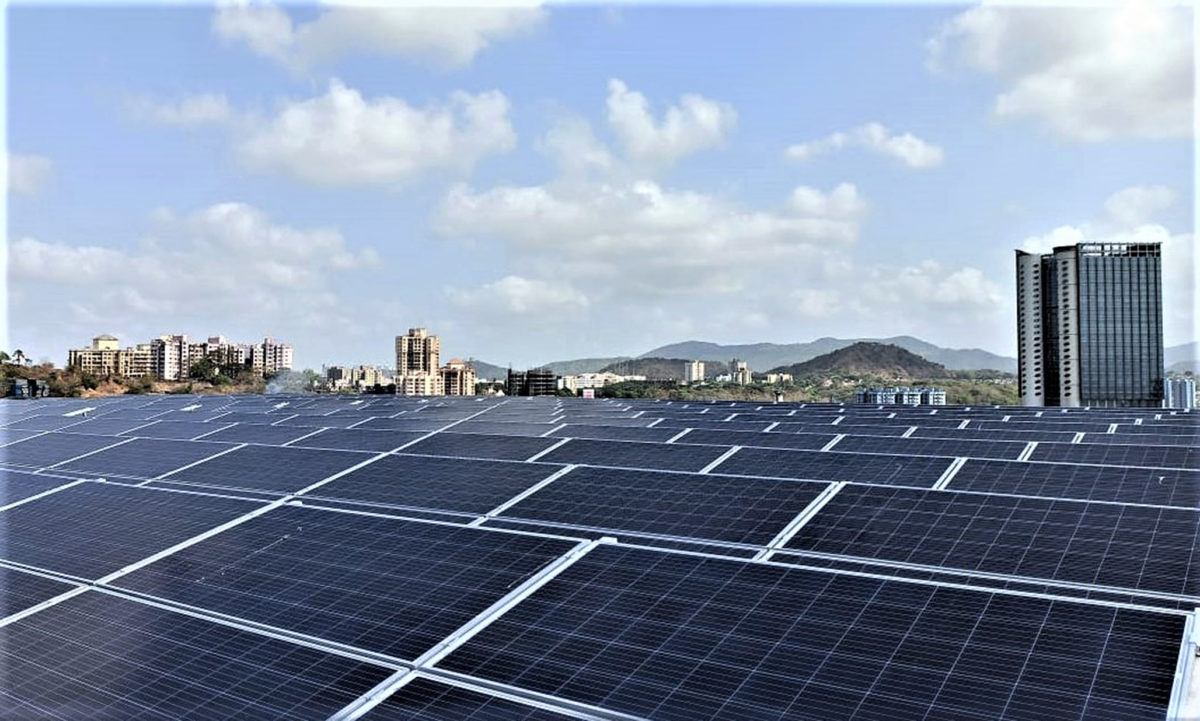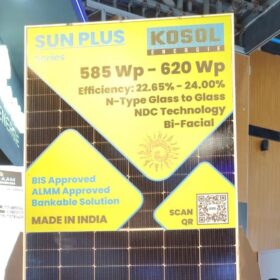Gigawatts of solar farms are being installed throughout the world. But have you ever wondered how solar panels are manufactured?
Solar panels are made of solar cells, connected using metal connectors, and these cells are made of silica-extracted sand. The sand has to be purified to 99.99%. Silicon, after oxygen, is the second most abundant element present in the crust. Despite the abundance, what limits us is the high cost and the high energy required for converting sand into high-grade silicon. The high-purity silicon is produced in an arc furnace by heating the sand at temperatures of around 2000 degrees Celsius.
After this process, the silicon is obtained in the form of rocks. These rocks are then melted to form ingots. Boron is added to give silicon a positive electrical polarity. After the ingot has cooled down, it is ground and polished, leaving it with flat sides.
Monocrystalline cells are manufactured from one crystal of silicon. Whereas polycrystalline cells are made by melting multiple silicon crystals together. Monocrystalline panels have higher efficiency than polycrystalline panels, therefore having a higher price.
The ingots are then sliced into thin disks called wafers, after which an anti-reflective coating is put on the wafer to reduce the shininess; otherwise, it would reflect rather than absorb. Thereafter metal conductors are added to each surface. Phosphorus is then put as a thin layer over the surface, charging it with a negative electrical orientation. The boron-phosphorus duo gives the panel a p-n (positive-negative) junction.
After the cells are put together, a thin layer of glass is added on the front side, and a durable back sheet made of polymer is attached at the back, which safeguards the panels from electrical harm and moisture. The panels are then attached to solar frames or solar support using adhesives. Finally, modules are tested to assess their power, efficiency, power output, etc. On an average, solar panels have a life of 25 years. But what after 25 years?
How are panels recycled?
There have been many narratives floating around about how too many panels, at the end of their lifetime are going to cause an overload of toxic trash. Stating there are no challenges whatsoever would be a gross oversimplification of things. There is a fundamental mismatch between the sheer volume of solar installations versus the recycling facilities existing today. The renewable future is not just about rampant installations, it is also about assessing what catapulting effects such changes can have.
So what exactly happens in a recycling facility? First, the panels are separated from the aluminium frames and electric boxes. Then the glass is detached from the panels. Then valuable materials such as silver and copper are extracted from them. Advancements in robotics and AI have made the disassembling of panels quicker and more cost-effective.
Panels contain toxic materials like lead. If dumped in landfills, they can cause environmental pollution. And recycling is much more expensive; to counter this what could be done is the cost of recycling should be factored in formulating a budget, to appropriate the price at which panels are sold. It has been only recently that governments across the world are focusing on building recycling capacities.
In India, the Ministry of Environment, Forest and Climate Change has added the treatment of solar waste under electronic waste (e-waste) management. Even in the USA, recycling of panels wasn’t mandated until very recently. The volume of decommissioned PV panels across the world is predicted to rise to 5 million metric tons per year.
The demand for recycled materials derived from the panels is set to skyrocket. The recycling market is touted to be worth 2.7 billion dollars by 2030. If by 2050 we manage to develop an efficient system of recycling worldwide, we could produce 2 billion new panels, just by using recycled materials.
Authored by: Ravi Kumar, founding team member and vice president of Oorjan Cleantech. Oorjan is co-founded by IITians and ex-bankers and is one of the fastest-growing solar companies in India.
This content is protected by copyright and may not be reused. If you want to cooperate with us and would like to reuse some of our content, please contact: editors@pv-magazine.com.








By submitting this form you agree to pv magazine using your data for the purposes of publishing your comment.
Your personal data will only be disclosed or otherwise transmitted to third parties for the purposes of spam filtering or if this is necessary for technical maintenance of the website. Any other transfer to third parties will not take place unless this is justified on the basis of applicable data protection regulations or if pv magazine is legally obliged to do so.
You may revoke this consent at any time with effect for the future, in which case your personal data will be deleted immediately. Otherwise, your data will be deleted if pv magazine has processed your request or the purpose of data storage is fulfilled.
Further information on data privacy can be found in our Data Protection Policy.